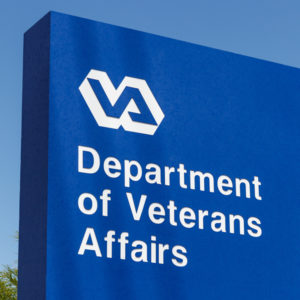Under President Trump’s leadership, the Department of Veterans Affairs has undergone its greatest transformation since the end of World War II.
This overhaul was aimed at correcting problems that were identified after a series of scandals emerged six years ago. In 2014, it became clear that the VA had failed to deliver care for the men and women who served this nation, and sadly tried to hide this failure from the American public.
But fixing this department wasn’t just good for veterans. The VA was improved and rejuvenated just in time to play a critical role in America’s fight against COVID-19.
As VA Secretary, I saw this unprecedented change up close. Here’s how it happened.
First, we gave veterans something millions of other Americans already have — a choice in who they see for their healthcare.
President Trump signed the MISSION Act in 2018, and since it took effect, more than 2.6 million veterans have been referred to private care. This permanent program is benefitting far more Veterans than the previous narrow, temporary and unwieldy “choice” program.
The VA didn’t disappear once veterans were given this choice, as many feared. Instead, the VA picked up its game to better compete with community providers.
President Trump signed legislation that brought much-needed accountability to the VA and has helped the department fire more than 11,300 employees who weren’t meeting our standards.
We started listening to the thousands of VA medical professionals, turning this into a bottom-up organization that learns from VA staff members who are serving patients on the front line.
And we launched a broad effort to modernize the department to give Veterans the customer service they deserve and expect in the 21st century.
These changes reinvigorated the VA. For starters, employee morale went up. After ranking 17th out of 18 in a survey of “best places to work” in the federal government, the VA has now ranked in 6th place for the last two years.
More motivated employees turned into faster, higher-quality service, and veterans noticed.
They voted with their feet and flocked to the VA, which completed more than 59.9 million appointments in fiscal year 2019, 1.7 million more than the year before. Veterans’ trust in the VA reached an all-time high in April — up 19 points since President Trump took office.
What’s more, veteran trust in VA healthcare increased to 90.1 percent in May.
By the time COVID-19 started to emerge in America, the retooled VA was there to respond, and helped set the standard for how to cope with this unprecedented situation.
The VA began coordinating its nationwide response the day after the first COVID-19 case was confirmed in America.
That response included the tough decision to close the 134 nursing homes we manage to outside visitors, which saved lives. As a result, the VA’s nursing homes are showing lower levels of COVID-19 cases when compared to the data being reported from non-VA nursing homes.
These results allowed the VA to undertake what we call our “Fourth Mission,” which is supporting America’s healthcare system during a time of crisis.
The VA accepted 91 missions from the Federal Emergency Management Agency to protect veterans and non-veterans alike.
We deployed thousands of staff members to outside facilities to show them the steps we took to keep patients safe. We shared medical equipment with healthcare facilities that were stressed and took hundreds of non-veteran patients into VA facilities when those stressed facilities threatened to break.
VA staff even deployed to assist Native Americans struggling with the virus, something of which I’m especially proud. Native Americans serve in the military at a higher rate than most other ethnic groups, and it was a privilege to come to their aid.
The record is clear: The historic transformation of the VA was timely not just for veterans, but for all Americans. The VA’s assistance during COVID-19 also connected the department to non-veterans like never before, and we are eager to build upon these connections as we work with companies, states, faith-based groups and others to end suicide in this country.
This is America’s new VA — a VA that has saved lives, is true to its mission, and has shown it is worthy of trust it has earned from Veterans who have borne the battle.

